Key takeaways:
- Ichimoku Cloud simplifies market analysis, providing clear insights into trends, support, and resistance levels.
- Integrating technical analysis enhances trading confidence and decision-making, allowing for more nuanced strategies.
- Understanding volume and market sentiment alongside technical indicators is crucial for effective trading.
- Future applications of the Ichimoku Cloud may include AI integration and real-time sentiment analysis, enhancing trading methodologies.
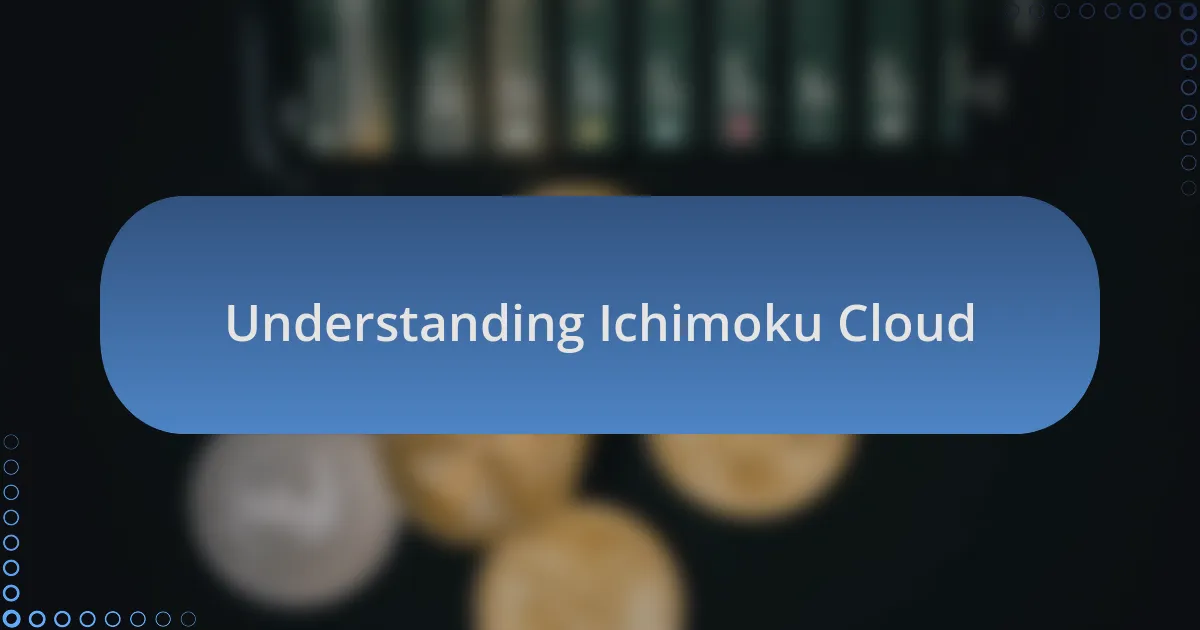
Understanding Ichimoku Cloud
The Ichimoku Cloud is a comprehensive technical analysis tool that offers insights into price trends, support, and resistance levels. I remember the first time I encountered this indicator; it felt like unlocking a new layer of understanding about market dynamics. Have you ever tried to find trends in a chaotic chart? The Ichimoku Cloud simplifies that chaos into a clear visual representation.
One key component is the cloud itself, which is formed by two lines, Senkou Span A and Span B. As I studied these lines, I found it intriguing how they visually predict future price action; when the price is above the cloud, for instance, it suggests bullish sentiment. Reflecting on my experience, it’s almost like having a compass that directs you through the fog of uncertainty in cryptocurrency trading.
Another important aspect of the Ichimoku system is the tenkan-sen and kijun-sen, representing short-term and long-term trends, respectively. There was a moment in my trading journey when I realized that these lines not only signal potential buy or sell points but also help identify shifts in market momentum. Isn’t it fascinating how something so simple can provide clarity in such a volatile environment?

Basics of Crypto Analysis
When diving into crypto analysis, I quickly learned that understanding market movements requires more than just a basic grasp of price charts. Initially, I was overwhelmed by the noise—the seemingly random price spikes and dips. It wasn’t until I started segmenting my analysis into trends, patterns, and confirmed signals that I began to feel a sense of control; have you ever tried to decipher a language without knowing the grammar? Establishing a structured approach helped me decipher the crypto dance.
One of the most enlightening revelations for me was recognizing the importance of volume analysis alongside price action. In my early days, I would overlook volume, thinking it was just a secondary concern. However, when I began to correlate increased volume with price movements, I could see the true strength behind a trend. Have you ever felt the rush when a specific trade starts moving in your favor? That rush intensified when I realized it often coincided with significant volume spikes, adding validation to my trading decisions.
Another fundamental aspect I encountered was understanding key support and resistance levels. I vividly recall a time when the price of a coin I was trading hovered around a critical resistance point for days. At first, I panicked. What would happen if it broke above or below? It taught me that these levels aren’t just numbers; they are psychological barriers that traders react to, creating moments of intense market action. How often do we let fear dictate our choices in trading, rather than relying on pure analysis? Finding a balance between emotions and analytical insights is key in navigating the crypto world.
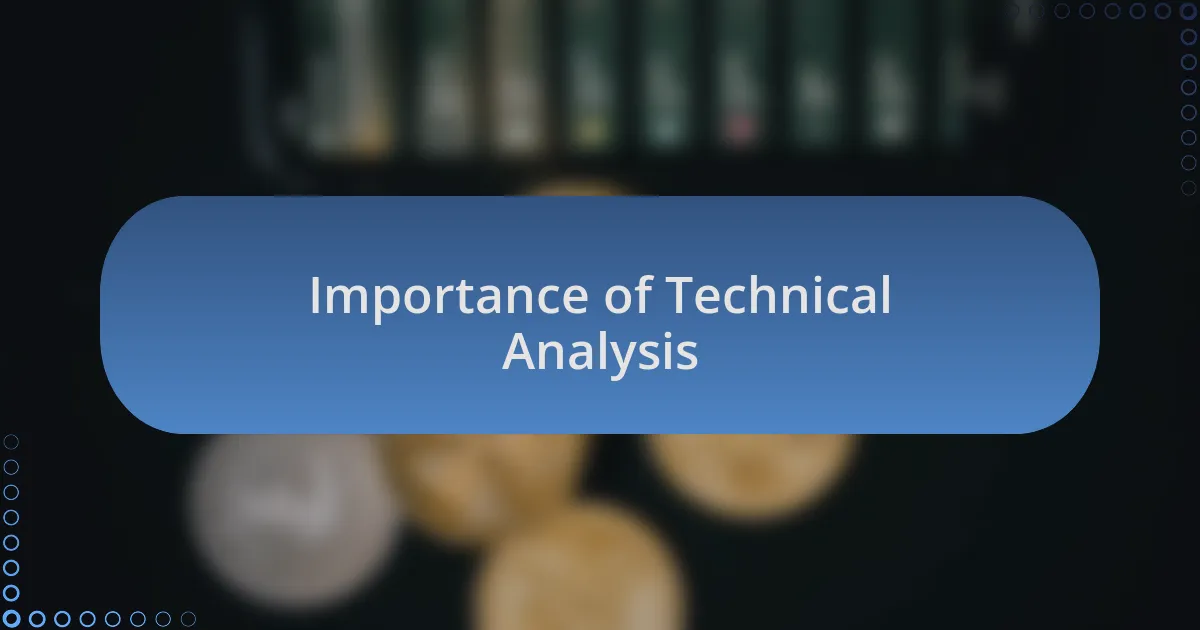
Importance of Technical Analysis
Technical analysis acts as a compass in the unpredictable world of cryptocurrencies. I remember when I first encountered significant market drops; the chaos made me feel lost. However, by learning to read technical indicators, I gained clarity. They transformed what felt like a storm into a series of patterns I could navigate. Can you imagine how empowering it is to base your decisions on data rather than pure instinct?
In my experience, integrating technical analysis into trading strategies has not only increased my confidence but also my success rate. There was a particular instance when I spotted a bullish divergence on the charts just before a price surge. It felt like I had cracked a code, turning what could have been a missed opportunity into a well-timed entry point. Have you ever had a moment where the right analysis led you to success? Those moments remind us why technical analysis is crucial.
Moreover, technical analysis provides a common language among traders, allowing us to share insights and strategies. During a recent trading discussion with peers, we analyzed an asset’s move using various indicators—it felt like we were all part of a chess match, anticipating each other’s moves. How valuable it is to engage with others in this way! It’s not just about individual trades; it’s about creating a community that thrives on shared knowledge and analytical prowess.
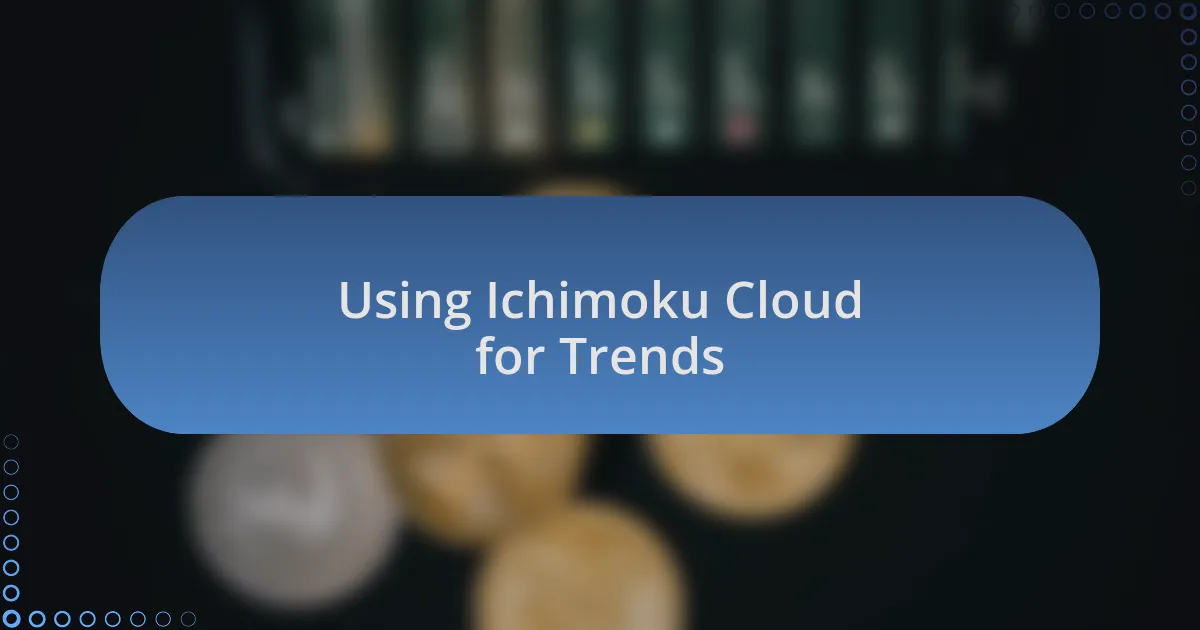
Using Ichimoku Cloud for Trends
Using Ichimoku Cloud for Trends
The Ichimoku Cloud offers a comprehensive view of the market, and I always find it fascinating how it can simplify the trend analysis process. Once, while monitoring a volatile altcoin, the shifts in the cloud helped me identify a strong bullish trend just in time. That moment made me appreciate how the cloud can act like a lighthouse in a sea of noise, guiding my decisions with clarity. Have you ever felt lost in the metrics, only to find your way with one reliable indicator?
I remember a day when Bitcoin’s price was bouncing around, creating a confusing landscape of highs and lows. By analyzing the Ichimoku Cloud, I noted how the price was positioned relative to the cloud’s various levels, confirming a clear upward trend. It felt incredibly reassuring to see those signals align; the confidence it gave me to enter a position was invaluable. That experience taught me the importance of trusting this tool as a part of my trading arsenal.
One key insight I’ve gained is the significance of the Kumo (the cloud) itself. The thickness of the cloud can indicate trend strength, and I’ve often used this information to manage my trades effectively. In situations where I saw a thinner cloud, I chose to be cautious, waiting until the cloud thickened before making a move. It’s a strategy that has saved me from unnecessary losses—have you considered how the cloud’s characteristics can change your approach to trends?
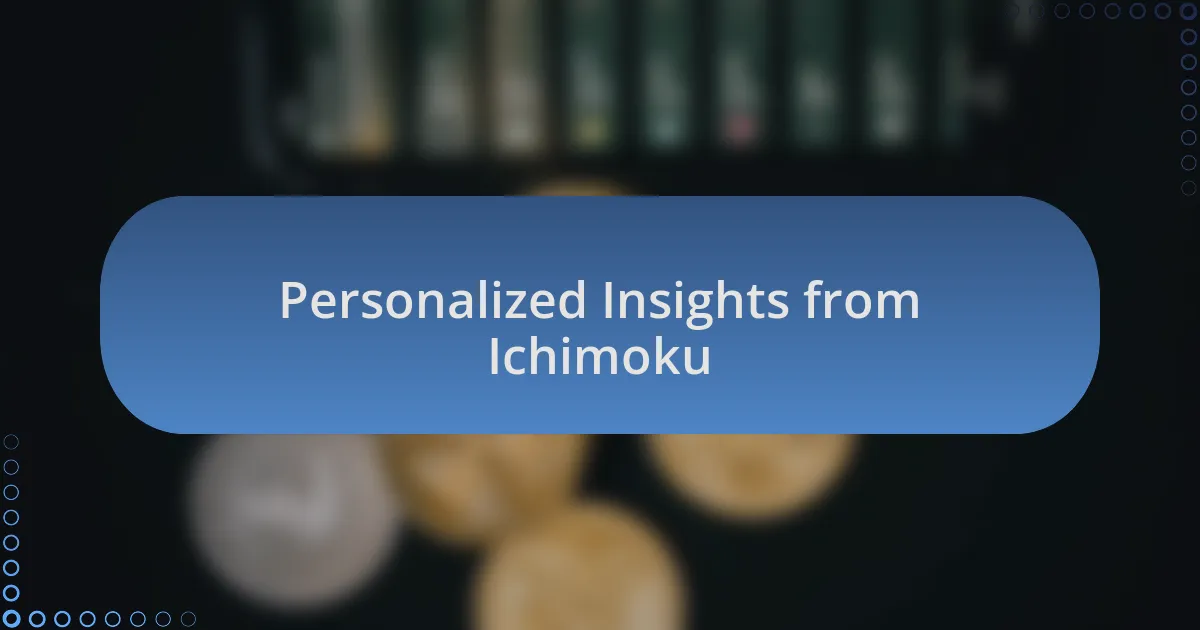
Personalized Insights from Ichimoku
One of the most personalized insights I’ve gleaned from using the Ichimoku Cloud is how it can enhance my risk management strategies. There was a time when I was eyeing an emerging crypto project. By closely observing the Tenkan-sen and Kijun-sen lines, I realized that their crossover signaled potential market volatility. This awareness allowed me to set my stop-loss orders more strategically, preventing what could have been a costly misstep. Have you ever found yourself in a position where a little foresight could have saved you?
I often reflect on how the Chikou Span, while sometimes overlooked, can provide an incredible perspective on market momentum. In a recent trade, I noticed that the Chikou Span was trailing well behind the price, indicating strong bearish sentiment. This insight didn’t just help me avoid losses; it prompted me to exit a position I’d been hesitant to leave. It’s moments like these that make me wonder: are we paying enough attention to the nuances each line in the Ichimoku Cloud offers us?
Furthermore, I’ve learned that the Ichimoku Cloud isn’t merely an analytical tool—it’s a teacher that shapes my trading psychology. Reflecting on my early days, I often acted impulsively, but the cloud’s clear visual signals have instilled a sense of discipline within me. During one particularly nerve-wracking market dip, I found solace in the cloud’s structure, reminding me to remain calm and stick to my strategy. That experience was pivotal; have you considered how your indicators influence not just your decisions, but your mindset as well?
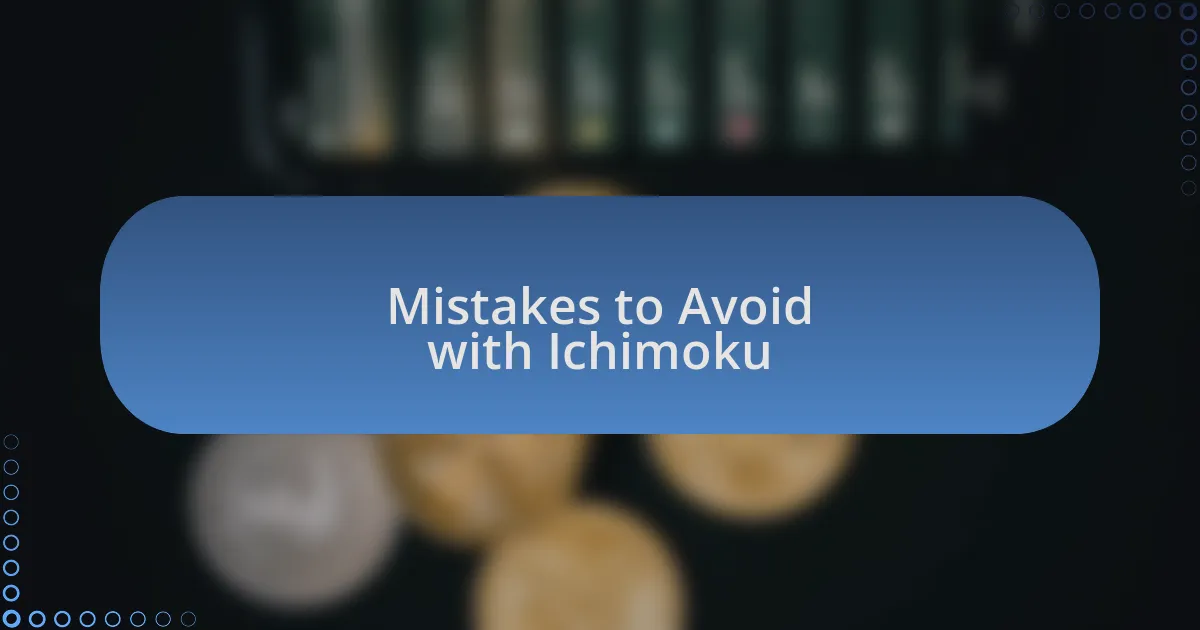
Mistakes to Avoid with Ichimoku
When utilizing Ichimoku, one major mistake I’ve made in the past is ignoring the different timeframes of the indicators. Early on, I often relied solely on the daily charts, neglecting the insights from the hourly or weekly views. This led to missed opportunities and whipsaw trades that could have been avoided had I considered a more holistic approach. Have you ever focused too narrowly on a single timeframe, only to regret it later?
Another pitfall I encountered was placing too much weight on the Cloud’s support and resistance levels without considering broader market contexts. There were occasions when I confidently set trades based on the Cloud’s signals, only to see them falter due to unexpected news events. I learned that price action doesn’t exist in a vacuum, and ignoring external influences can result in costly mistakes. Have you faced a situation where external factors blindsided your technical analysis?
Additionally, I’ve sometimes underestimated the importance of the Kumo’s thickness. When the Cloud appears thin, it often signifies uncertainty and potential volatility. There was a time when I ignored this detail, leading me to enter trades with an illusion of stability. Mental note: Always assess the Cloud’s structure before making a move. How attentive are you to these subtleties in your trading strategy?
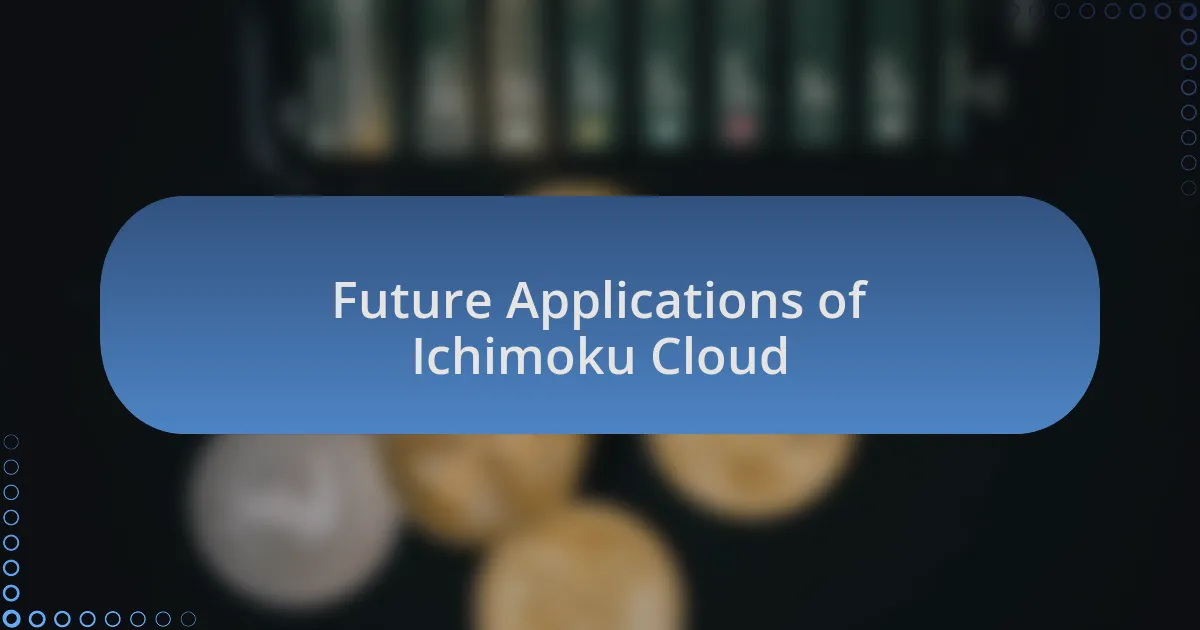
Future Applications of Ichimoku Cloud
As I delve deeper into the future applications of the Ichimoku Cloud, I’m particularly excited about its integration with machine learning algorithms. Imagine systems that can analyze vast datasets and identify patterns in the Ichimoku indicators at unprecedented speed. This advancement could transform how we approach trading strategies, allowing for more nuanced decision-making. Have you considered how AI could enhance your trading methodologies?
Moreover, the potential for real-time sentiment analysis coupled with Ichimoku Cloud indicators is fascinating. In my experiences, understanding market sentiment has always been crucial for successful trading. By combining social media trends or news sentiment with the signals from the Cloud, traders could potentially forecast price movements more effectively. How valuable would it be to have such insights at your fingertips?
Looking ahead, I envision community platforms emerging where traders share their Ichimoku experiences and applications. This collaborative approach could lead to enriching discussions that deepen our understanding of how to adapt the Cloud to various market conditions. I’ve always found that sharing insights often leads to discovering strategies I hadn’t considered. How often do you engage with communities to enhance your trading tactics?